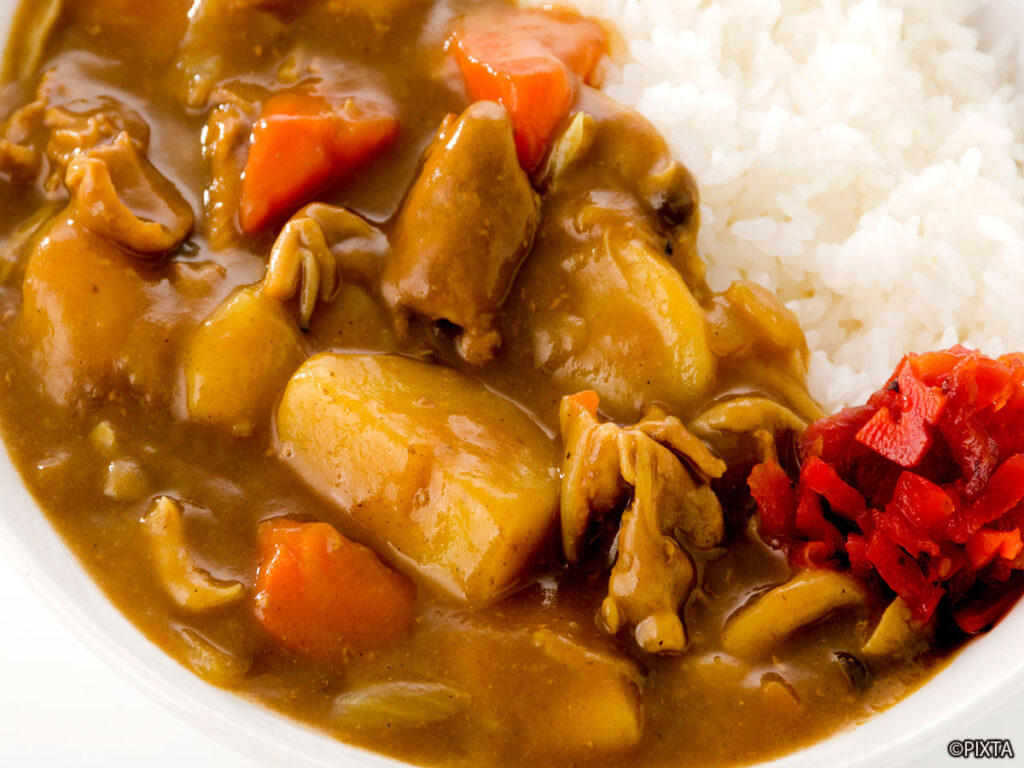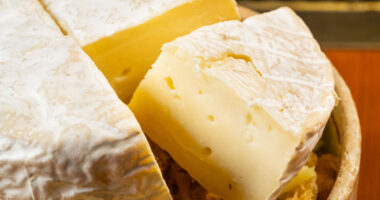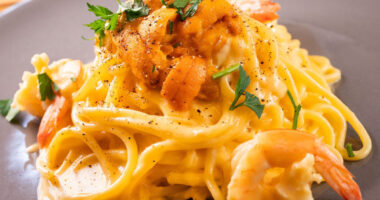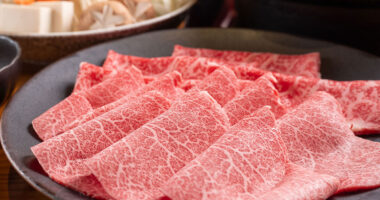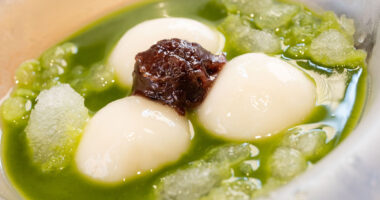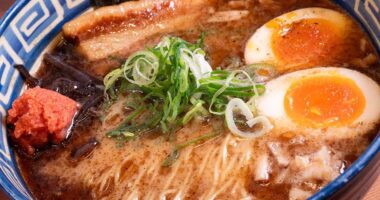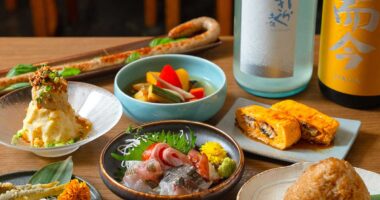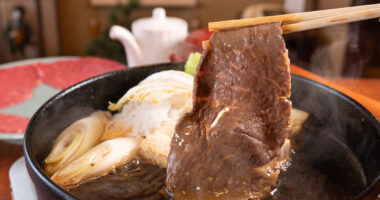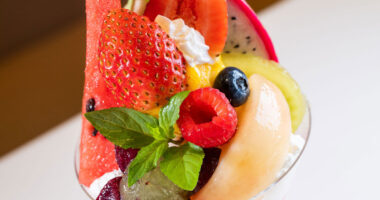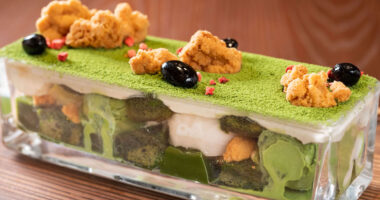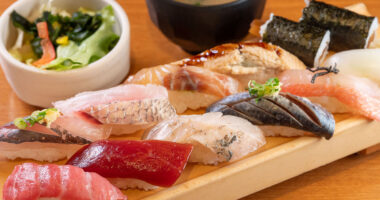Japanese curry (often written simply as カレー, or karē) is one of the country’s most popular foods. Whether it’s served with rice, noodles, or even in delicious fried buns, there’s a way for you to enjoy one of the Japanese foods that have exploded in popularity around the world.
What is Japanese curry?
Japan has a wide range of restaurants that offer curry dishes from different countries, but Japanese-style curry has carved out its own place as a popular option. It is typically made with a roux that consists of flour, oil, and curry powder, which is cooked with a variety of ingredients such as meat (usually beef, pork, or chicken), vegetables (such as potatoes, carrots, and onions), and sometimes fruit (such as apples).
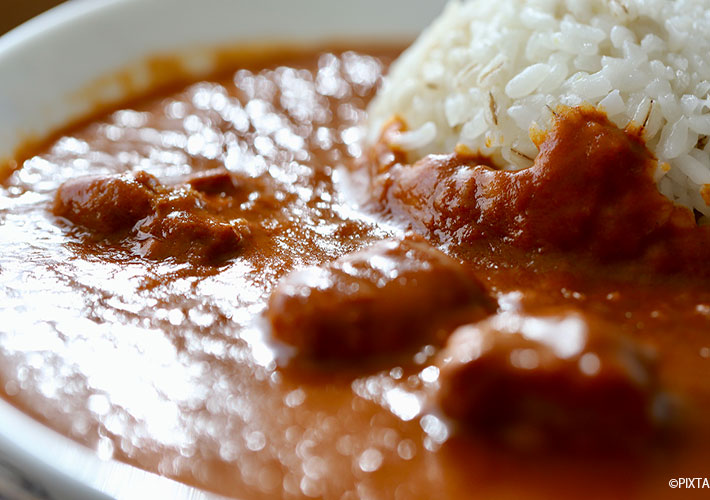
While spicy varieties are available, a lot of Japanese curry has a mild taste that goes down nice and easy.
The roux gives the curry a thick and creamy texture, as well as a sweet and comforting flavor. While you may be used to spicy and tangy curries from India or Southeast Asia, Japanese curry has a mild base made for matching with rice, which it is often paired with. For those looking for some heat, however, there are certainly plenty of spicy varieties available
Where to get Japanese curry
Those looking for Japanese curry in Japan are in luck–it’s not only widely available but often at very reasonable prices. Chain restaurants and local Japanese-style cafes and restaurants often serve it for 500-1,000 yen, although additional toppings can often raise the price. カレーパン karē pan Curry bread can be purchased for 120 to 150 yen from the hot food section at convenience stores and bakeries, where they cost 200 to 400 yen. Those who find themselves hooked can hunt down fancier versions at specialty stores. If you’re looking to try some カレーうどん karē udon curry udon, it’s typically priced in the 500 to 800 yen at most medium-scale Japanese restaurants, although some train station platforms even have small shacks that offer it for half that price. If you’re a noodle lover, curry udon is a great way to get a taste of Japanese curry!
Types of Japanese curry
As noted above, the most common way to enjoy Japanese curry is as カレーライス karē raisu “curry rice,” which is Japanese curry served over white rice with your preferred toppings such as katsu, hamburger steak, or mixed vegetables. There are a plethora of toppings and styles to get your curry fill.
カレーライス curry rice: Japanese curry served over rice.
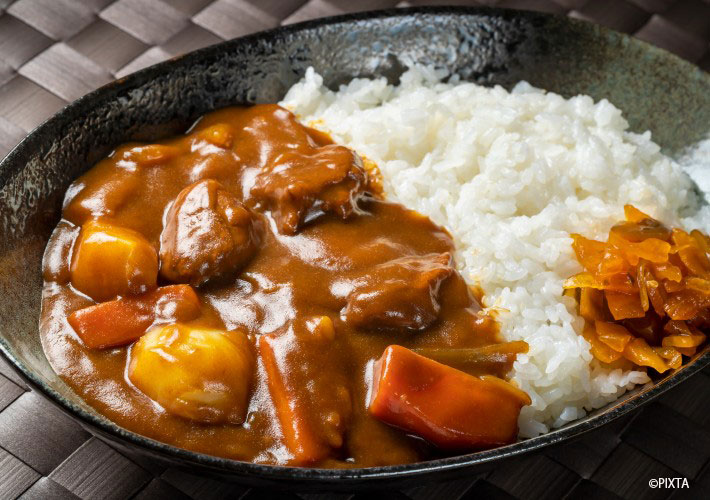
A plate of curry rice.
カツカレー katsu curry rice: Curry over riced topped with katsu.
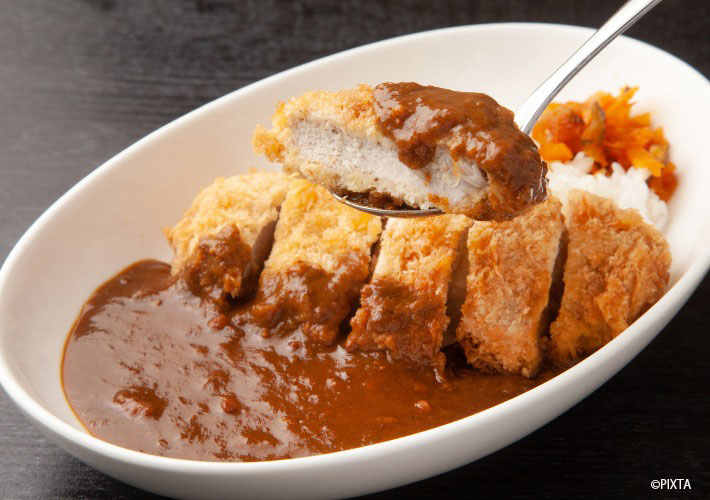
A serving of katsu curry, which has become quite popular overseas.
カレーパン curry bread: Deep fried breadcrumb-covered buns filled with Japanese curry.
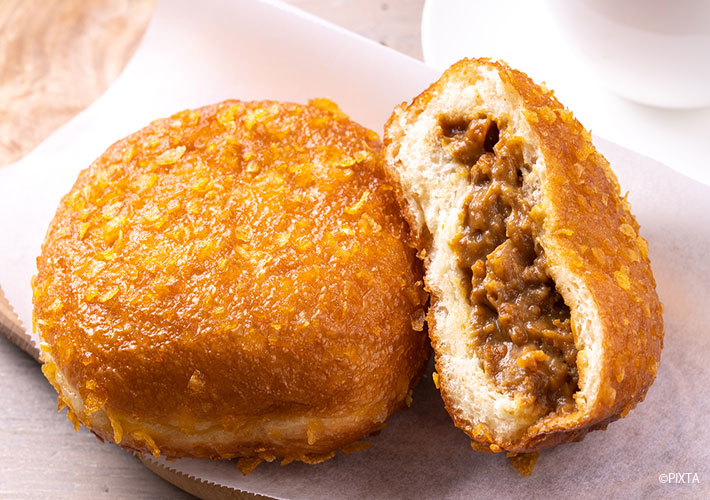
A fried bun of curry bread.
カレーうどん curry udon: Thick and chewy udon noodles served in a curry soup.
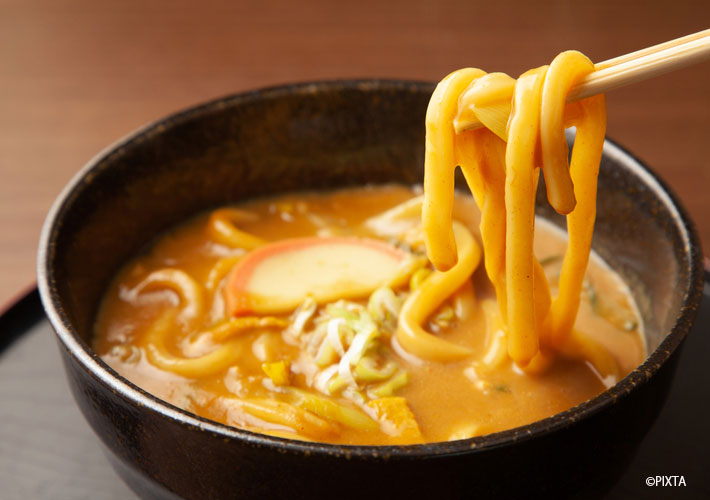
A bowl of curry udon noodles.
スープカレー soup Curry: Soup Curry is a popular hearty Japanese curry dish said to have originated in Hokkaido. It differs from standard Japanese curry in that it has a soup-like consistency. Its thin but flavorful broth allows it to be enjoyed just like a soup, and so rice is usually served on the side.
Soup Curry is often topped with chicken, beef, pork, seafood, or vegetables, and many restaurants offer customization of the toppings and spice levels. Its more herby and spicy broth makes it a popular meal in the winter.
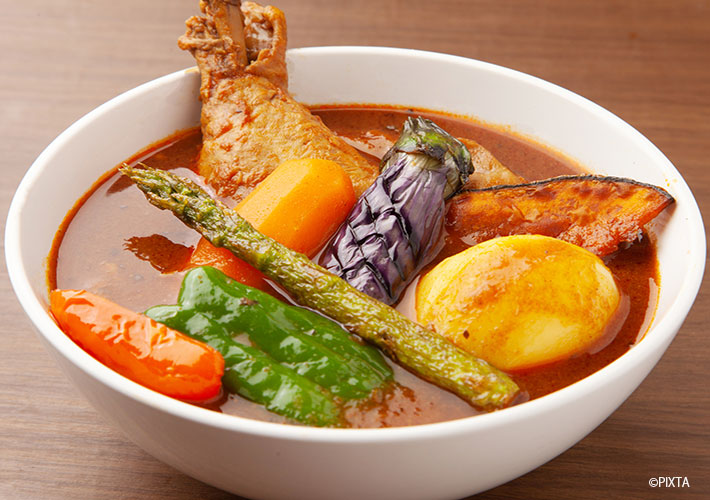
Soup Curry has a distinct consistency that almost turns curry into a drink.
Tips for enjoying Japanese curry
Japanese curry has so many popular toppings, it feels like a waste to just try one. If you can go to a place that offers different types, try and explore ones that aren’t commonly available in your country. Curry in Japan, particularly at chain restaurants, often comes with 福神漬け fukujinzuke (sweet Japanese pickles) or ラッキョウ rakkyō (pickled Japanese scallions) as small side dishes–mix these in to give your curry even more flavor. If you’re looking to kick things up a notch, many Japanese restaurants that serve curry also offer a blend of spices called 七味唐辛子 shichi-mi tōgarashi that you can add to your liking. Some chain restaurants also ask you to choose your preferred spice level upon ordering, as well.

Pickled scallions (left) and sweet Japanese pickles (right) are a great way to add some flavor to your curry.
Because Japanese curry isn’t usually as spicy as some other curries, a lot of its many tasty toppings don’t get overpowered. The various combination of toppings, especially at chain restaurants, offers a wide selection of curries to choose from. Its availability in the form of curry bread also allows you to enjoy it as a light snack.
